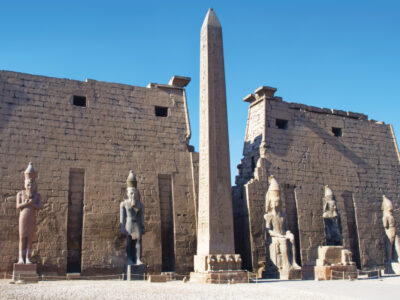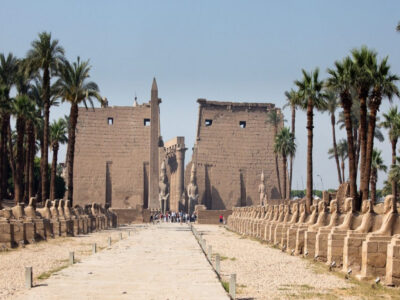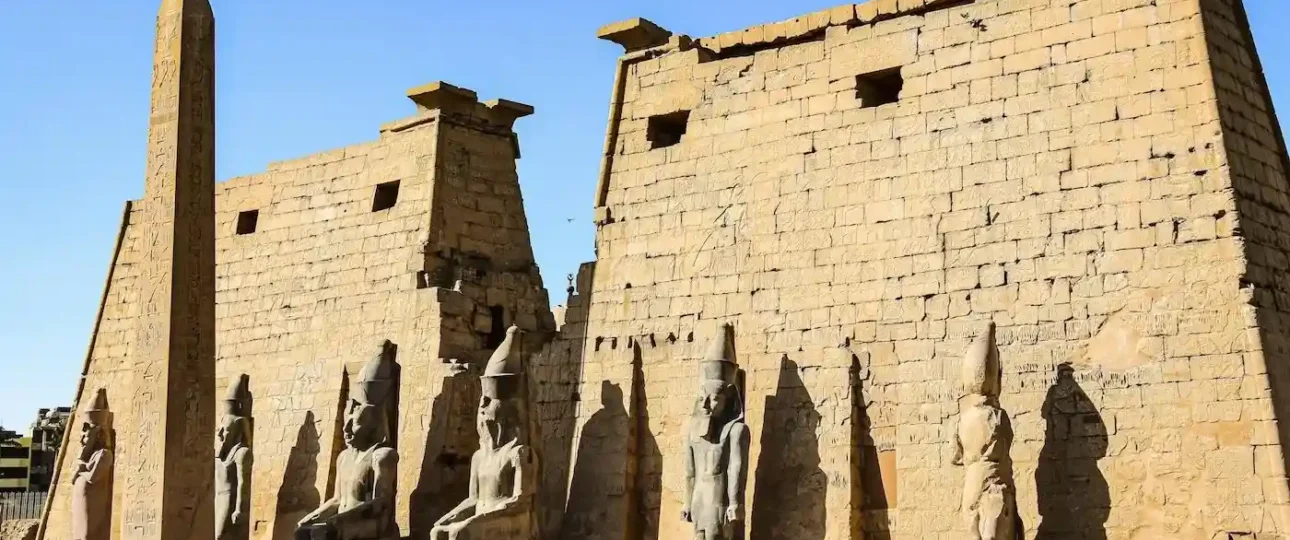Luxor Temple: Unveiling the Eternal Beauty of Ancient Egypt’s Grandeur
Introduction
 Nestled gracefully on the East Bank of the Nile River, Luxor Temple stands as a majestic testament to the grandeur and spiritual significance of ancient Egyptian civilization. One of the most iconic landmarks in Luxor, Egypt, this temple complex captivates visitors with its monumental architecture, intricate reliefs, and rich historical significance. In this article, we embark on a journey through time to explore the magnificence of Luxor Temple, delving into its historical context, architectural wonders, religious importance, and the enduring allure that beckons travelers from around the world.
Nestled gracefully on the East Bank of the Nile River, Luxor Temple stands as a majestic testament to the grandeur and spiritual significance of ancient Egyptian civilization. One of the most iconic landmarks in Luxor, Egypt, this temple complex captivates visitors with its monumental architecture, intricate reliefs, and rich historical significance. In this article, we embark on a journey through time to explore the magnificence of Luxor Temple, delving into its historical context, architectural wonders, religious importance, and the enduring allure that beckons travelers from around the world.
Historical Context of Luxor Temple
Luxor Temple has a long and storied history, with its construction spanning several dynastic eras. Originally established during the New Kingdom, it was expanded and modified by successive pharaohs and conquerors over the centuries, resulting in a mesmerizing blend of architectural styles.
Luxor and Karnak: A Divine Axis
 Luxor Temple’s significance is closely linked to its alignment with other sacred sites, most notably Abydos and Karnak Temples. The Avenue of Sphinxes once connected Luxor Temple to Karnak, creating a symbolic pathway for religious processions during important festivals.
Luxor Temple’s significance is closely linked to its alignment with other sacred sites, most notably Abydos and Karnak Temples. The Avenue of Sphinxes once connected Luxor Temple to Karnak, creating a symbolic pathway for religious processions during important festivals.
The Opet Festival: A Symbol of Renewal
Luxor Temple played a central role in the annual Opet Festival, celebrated in honor of the Theban Triad: Amun, Mut, and Khonsu. During this festival, statues of the gods were carried from Karnak to Luxor Temple, symbolizing the gods’ journey to renew the pharaoh’s divine energies and the kingdom’s prosperity.
Architectural Wonders of Luxor Temple The architectural brilliance of Luxor Temple stands as a testament to the ancient Egyptians’ artistic achievements and reverence for the gods.
The Colonnade Hall: A Forest of Pillars
The Colonnade Hall, characterized by its rows of massive columns, welcomes visitors into the temple complex. Each column is adorned with intricate carvings and hieroglyphs, recounting the exploits of the pharaohs and their religious devotion.
The Court of Amenhotep III: A Sanctuary of Divinity
The Court of Amenhotep III, featuring colossal statues of the pharaoh, is a majestic open-air sanctuary dedicated to the god Amun-Ra. This space served as a platform for religious rituals and the pharaoh’s connection to divine powers.
Religious Significance of Luxor Temple Luxor Temple held profound religious significance in ancient Egyptian spirituality, serving as a place of worship and devotion to the gods.
The Cult of Amun-Ra: King of the Gods
Amun-Ra, the principal deity of Luxor Temple, was revered as the king of the gods and the embodiment of cosmic creative power. The pharaohs associated themselves closely with Amun-Ra, emphasizing their divine legitimacy and their role as intermediaries between the gods and their people.
Rituals and Offerings
Priests performed elaborate rituals and made offerings to the gods within the temple’s sacred precincts. These rituals aimed to maintain cosmic order, ensure the prosperity of Egypt, and secure the favor of the gods.
Enduring Allure and Modern Significance The allure of Luxor Temple transcends time, drawing travelers, historians, and enthusiasts from around the globe to marvel at its splendor and unravel its mysteries.
A UNESCO World Heritage Site
As a UNESCO World Heritage Site, Luxor Temple stands as a testament to the cultural and historical legacy of ancient Egypt. Its preservation ensures that future generations can appreciate its architectural beauty and religious significance.
A Cultural Treasure for Modern-day Travelers
Today, Luxor Temple remains a treasured destination for travelers seeking to immerse themselves in the wonders of ancient Egypt. Exploring its vast complex, adorned with captivating reliefs and towering columns, offers a glimpse into the ancient world’s spiritual devotion and artistic achievements.
Conclusion
Luxor Temple, with its majestic architecture and rich historical context, stands as an enduring symbol of ancient Egypt’s grandeur and spiritual devotion. As we traverse its colossal columns and intricate carvings, we are transported back in time, bearing witness to the profound religious significance and artistic brilliance of this timeless temple.
NileTravel Machine invites you to embark on this captivating journey to Luxor Temple, where history and spirituality intertwine, For travelers who wish to experience the magic of Luxor Temple along with other iconic sites of ancient Egypt, joining a Nile cruise
is the perfect way to combine history, culture, and relaxation along the majestic Nile River. inviting us to uncover the mysteries of Egypt’s past and embrace the enduring allure of one of humanity’s most fascinating ancient wonders.

